|
As we saw in The Sarbacher Clue, many factors came together to form the legitimate induction that a flying saucer device crashed in Arizona in May 1953. Accepting the induction to form a working hypothesis, the context allows us to make some informed surmises. If flying saucers were interplanetary and truly powered by some nifty antigravity warp drive, we’d be at Epsilon Eridani or Tau Ceti by now. That is obviously not the case. Therefore in accepting the induction we can also surmise that the early theorizing is more correct. The saucers are more conventional, but it comes down to inertia. You have to be a being of low inertia to take full advantage of the technology. We are not.
Antigravity drives are fun time theorizing by UFO adherents. However, the actual observed maneuvers of the saucers don’t support it. They support a design based on low inertia. To reconcile what appears to be a damning paradox (crashed saucer/no back engineered technology), we must explore the clues that inspired the earliest theory and continue to support low inertia for both the (real?) saucers and their occupants.
To briefly recap Dr. Robert Sarbacher’s place in this: He was a physicist and engineer with his own business, but he was also “dollar-a-year-man” with the Department of Defense Research and Development Board. He recalled there was a meeting concerning saucers and alien physiology at Wright-Patterson AFB sometime in the early Eisenhower Administration, but he was unable to attend due to his own business concerns. Some of these other R&D men went. It was from one or more of these “fellows” who had attended that he heard some information about the saucers and occupants. The saucers were lightweight and the occupants were more like insects; not necessarily in appearance, but 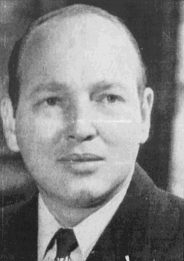 they had very low inertia and had no skin. Whether these R&D guys really saw this or were just “yakking around a water bottle” he didn’t know and couldn’t remember. they had very low inertia and had no skin. Whether these R&D guys really saw this or were just “yakking around a water bottle” he didn’t know and couldn’t remember.
Either way really doesn’t matter to theory. If they saw it, the R&D guys are direct eyewitnesses and we should listen attentively to what Sarbacher could remember. If it was just water cooler yakking, it is the product of the R&D guys’ analytical skills. For years they had been hearing the details of reports. In the summer of 1947 a phenomenon began identified popularly as “flying saucers.” Their observed maneuvers were fantastic— speeds in excess of 8,000 mph, right angle turns at high speeds, sudden vertical ascent to low orbit altitudes. They were thin, silvery, and at low speed wobbled, rocked, skipped and sailed, in response to atmospheric variables.
Dr. Robert Sarbacher’s memory was fuzzy 30 years after the events he was trying to recall, but the concept of insectoid occupants and low inertia had remained impressed upon him.
Research and Development is heavy duty applied science. These guys would have been good at analysis of physical forms and contrariwise good at analysis of UFO reports and what physical forms are required to account for the maneuvers of the saucers as reported. This in itself means the theory that saucers and their (supposed) occupants are low inertia should not be regarded as flippant.
Based on hundreds of flying saucer reports between 1947 and 1953, much was in place to suggest that flying saucers were oval, not round, very lightweight and their occupants therefore had to be of low inertia. Some of these facts had already inspired public theorizing. For instance, such claims were crucial in Frank Scully’s ludicrous but influential account of 3 crashed saucers in New Mexico in 1948. These were published in his 1950 book Behind the Flying Saucers. Reflecting more soundly the R&D environment, also in 1950, Commander Robert McLaughlin’s popular article in True declared the aliens were small and even inferred they were insectoid. The year after, Gerald Heard proposed they were super bees from Mars in Is Another World Watching?
From the very beginning observed and reported behavior of the discs indicated low inertia. Kenneth Arnold described their flying as erratic. They would skip and sail like a flat saucer when skipped over the surface of a lake. In his sighting, the 9 UFOs were traveling around 1,700 miles per hour. As time has come to show, this is incredibly slow compared to observed radar speeds. At low speed, they seem to have trouble with the atmosphere and winds.
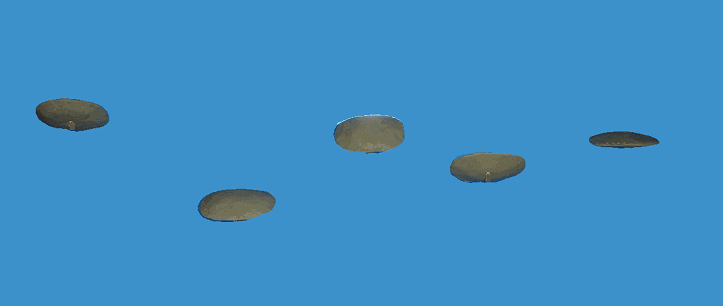
At low speed, they skip and sail, wobble, dip and waffle. Sunlight glints off their bright surfaces and attracts attention.
Dozens of reports exist of the saucers having stability problems at lower speeds. Hovering is never smooth. They invariably rock in the slightest breeze.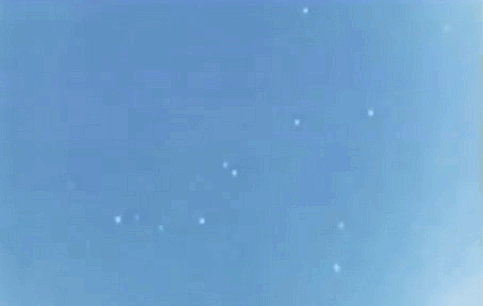 When they descend, they rock back and forth. It is called the “falling leaf” maneuver. When they descend, they rock back and forth. It is called the “falling leaf” maneuver.
The Utah Film of July 2, 1952, can only impress upon anyone who studies it that the saucers don’t follow a steady flight formation. Here, as when Arnold saw them, they are traveling at slower speeds.
Presenting just a couple of close frames of the Utah Film shows how the fleet of saucers follow formation.
July 1952 was one of the most momentous months in the history of flying saucers. Dozens of reports came in, and each one was from very well-trained observes. These reports included the famous Nash/Fortenberry sighting off Virginia. These two airliner pilots saw a group of discs speed in from the Atlantic. The lead disc slowed and made a motion, and the discs 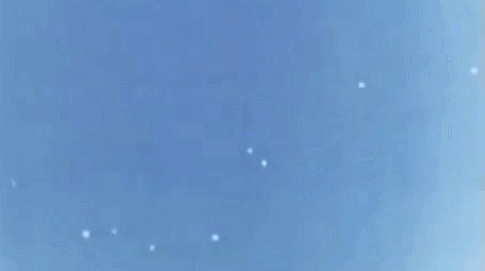 behind it initially piled up behind it, as if they were not expecting the lead disc to slow. The lead disc turned and the others followed. behind it initially piled up behind it, as if they were not expecting the lead disc to slow. The lead disc turned and the others followed.
The actions above are not rare. They indicate the pilots are rather bad or they tend to imply the saucers could not communicate between each other by any radio means. This could suggest electromagnetic propulsion, but the point here is that they must communicate through maneuvers.
There are a number of examples to support this assertion. One sighting comes from NASA physicist Paul Hill. From a ground vantage point, he too saw 2 saucers off the same area of Virginia in July 1952. Two came in from over the ocean. In his book Unconventional Flying Objects: a scientific analysis, he writes: “They slowed into a left turn to pass directly over our heads toward the west. They practically came to a stop as they approached. It was then that they started their strange jitter, a surprising phenomenon. First one leaped a little way ahead of the other as fast as or faster than the eye could follow— you couldn’t be sure. Then the other seemed to jump ahead. They kept up these odd mincing steps for a few seconds as they passed overhead, while we craned our necks.” Now the saucers made what Hill recalled was an “astounding maneuver.” “Maintaining their spacing of about 200 feet, they revolved in a horizontal circle, about a common center, at a rate of at least once per second. After a few revolutions, and without a pause, they switched their revolutions into a vertical plane, keeping up the same amazing pace.”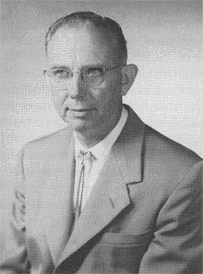
Now completely “awestruck,” Hill noticed that another saucer was coming in from the Atlantic. It quickly joined them. Then a fourth came along the James River and joined them. They floated along briefly and then accelerated to the west. During his own personal investigation, he discovered that the third saucer had traveled northward off the shore— even aircraft spotters had noted it— in order to join the others. He deduced that the orbital motion of the two saucers was “a rendezvous signal.”
A career long NASA engineer, Paul Hill. After his death his wife would publish his work: Unconventional Flying Objects: a scientific analysis.
In my own investigation, I uncovered a number of old Air Technical Intelligence reports where the witnesses described a couple of saucers doing this maneuver. Usually it was near the coast. Sometimes other saucers joined them, sometimes they did not. When this maneuver was observed by military pilots, it was invariably referred to as “dogfighting.”
Knowledge of how bees communicate does heavily suggest that the saucers communicate like insects. Bees have an elaborate language of circles, figure 8s, and gyrations, etc, to convey direction, location, even the quality of a food source, to other bees. Their behavior was quite popularized in the 1950s due to the devoted work of an Austrian scientist, Dr. Karl von Frisch.
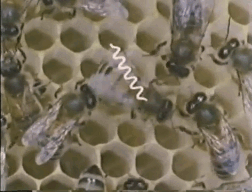 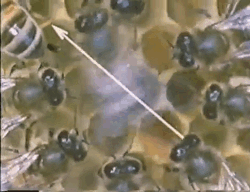
Just a couple of explanatory frames based on Frisch’s work— left, the vigor with which the scout shakes the abdomen reflects the quality of the source of nectar, and the direction he walks indicates degrees from the sun (right), in this case 40 degrees to the left of the sun. The bees will follow this course and gather the nectar. The number of sound pulses and shakes will also indicate the distance.
What I am saying is that those who closely followed the phenomenon of saucers and who were of scientific training could easily put 2 and 2 together and come up with a working hypothesis— size and thickness of discs, maneuvers indicating the ability to withstand terrific G forces, and the repeating pattern of communicating by maneuvers similar to earthly insects. Logically, the aliens had to be lightweight, small and insectoid. They were also very intelligent.
Bees and ants actually, not apes, are the most intelligent creatures on Earth after mankind. Ants and bees are industrious engineers. Bees even developed wind and water-cooled air conditioning long before mankind. Ants have generals and wage war. Both essentially build cities, in their way, with the bee possessing an impressive knowledge of geometry, mass and volume.
Altogether by Gerald Heard’s time in 1951 the general clues were in place to support a theory that aliens were insectoid. As the saucer phenomenon continued, it also became apparent the occupants of the saucers never contacted mankind or made any diplomatic overtures. If these are real craft and the occupants are insectoid then there is an easy explanation. Insects are more like individual cells in a body, locked together by a stifling behavioral pattern. There is no individual character. There are no philosophers and free thinkers. Insectoids, even highly intelligent or humanoid ones, might still have similar, more primitive behavioral patterns, and there is simply no desire or motive to contact mankind, just as our own insects only acknowledge us briefly in passing either assessing us for defensive or offensive capabilities. Linguistically, it may also be impossible.
From Dr. Robert Sarbacher’s recollections, we can say that the R&D guys were essentially chatting the current theories as of 1953. Yet, his initial memory was that a saucer had crashed and the R&D guys had just returned from Wright-Patterson AFB and were actually basing their theorizing on a recent examination of the craft and occupants. As he came under more scrutiny from eager UFOlogists, he began to modify himself. It had been 30 years, after all. Maybe it was just water cooler theorizing.
. . .Yet . . .if it was not?
Then we should suspect that the crash to which Sarbacher was referring was quite possibly the saucer recovery that Arthur Stansel described.
As surprising as it may be to adherents of the UFO legend, the account of Arthur G. Stansel is actually the first detailed account of a crashed flying saucer in situ. He came forward in 1973 with his story, telling respected UFO investigator Raymond Fowler, who then checked out Stansel to determine his reliability. To recount the story briefly: as an engineer working for Wright-Patterson he was on an assignment in Nevada when on May 21, 1953, he was seconded to somewhere in Arizona to examine a silver oval disc which had skidded to a landing in some remote location of hard desert. Atypical of the 1970s, Stansel described the craft as being a 30 foot diameter oval with concave top and bottom 10 feet less in diameter than the rim. It looked like brushed aluminum. There was a body. It was small and dark 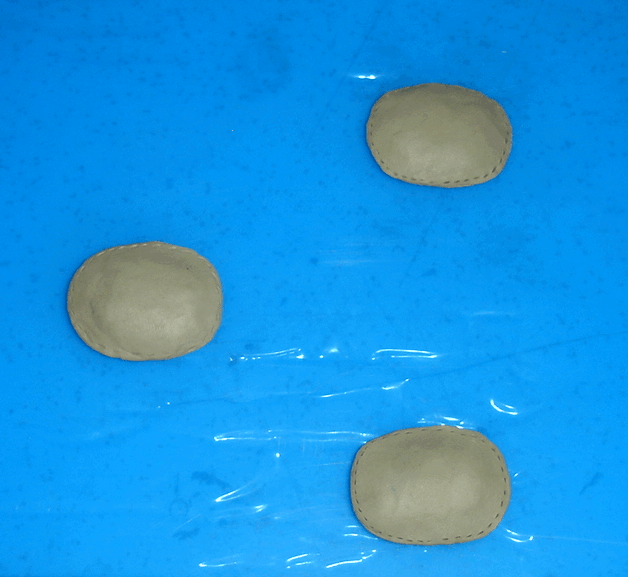 brown in color (at least its face). brown in color (at least its face).
Stansel’s description alone echoes the early sighting reports of saucers before the concept of round saucers and domes took over and became the norm. An early memo on the subject (September 23, 1947) by General Nathan Twining notes that the phenomenon of saucers is real and that they appear to be round or elliptical and domed on top. Domed on top did not mean a dome on top. It meant a concave top surface.
Clay saucers based on Stansel’s measurements; angle, lighting, visibility, they can appear as lentils, domed on top with flat bottoms, or ellipses.
Making Stansel’s account more intriguing is the fact it had come before the birth of the crashed saucer phenomenon. This happened in October 1974 when a retired mass communication professor at U of South Florida, Robert Spencer Carr, also a longtime NICAP member, declared that a perfectly preserved flying saucer was at Wright-Patterson AFB and so were the preserved bodies of 12 of its crew. It had crashed in 1948 near Aztec, New Mexico. The sensation was enormous and he went on to make a highly publicized speech in Tampa. He then appeared on numerous TV and radio shows. He truly popularized the concept of alien bodies at Wright-Patterson and even Hangar 18 as the place where they were kept.
Set in motion by this enormous national interest, Len Stringfield soon distinguished himself as the expert in crashed saucer recovery stories. He discussed Stansel’s account in full in his 1977 book Situation Red: The Coming UFO Siege. In 1978, he published his special paper Retrievals of the Third Kind and then Flying Saucer Review published it in a 3 part series beginning in the summer of 1979. Of all the accounts Stringfield had compiled from his informants, most spoke of saucers or bodies being seen at military installations (usually Wright-Patterson) in the early 1950s. Stansel’s account therefore fit even better 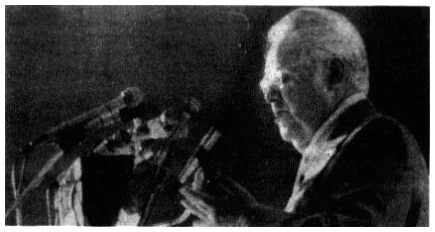 within the greater quilt of witness sightings. In fact, Stansel’s account had the ability to take on form . . . until . . . within the greater quilt of witness sightings. In fact, Stansel’s account had the ability to take on form . . . until . . .
Intense interest followed Carr’s declaration of a crashed saucer locked away at Wright-Patterson. The audio of his speech at Tampa is still preserved.
. . .Until 1980, the year later. The “Roswell Incident,” which was essentially nothing in Stringfield’s dossier, came to wipe out all the stories that centered on the early 1950s. Roswellers stretched and pulled the accounts of bodies and saucers at Wright-Patterson to make them nothing but installments in the long history of the Roswell saucer being shipped here or the bodies undergoing transfer or a later series of autopsies. Nothing like this was or could be inferred from Stringfield’s work, and his work was the only dossier there was on the entire sub field of crashed saucers and alien bodies.
Perhaps some, even most, of Stringfield’s informants were inspired to approach him because of the popularity Carr had given the concept, but Stansel wasn’t one of them. He had already given his account to Fowler in June 1973 and asked for anonymity. Fowler had protected him under the alias “Fritz Werner,” and it is only through Fowler that Stringfield learned of Stansel’s account. Yet even if those who came forward to Stringfield were inspired by Carr they still confined themselves to the early 1950s, and none seemed to try and support Carr’s account of a 1948 crash except one. Carr rather seems to have picked up on the same rumor of Wright-Patterson and then biliously expanded on it. (Carr’s credibility quickly took hits. It was obvious to the UFO community his date and details were inspired by nothing more than Scully’s discredited 1950 book Behind the Flying Saucers.)
No matter how one slices it, Stansel’s account is actually the first detailed account. And as it is probed into further, the description of the craft, the location of the crash, and the date, fit within a theory in place before it happened and neatly along a chain of UFO evidence to the present day.
From NICAP’s files comes a reflection of the UFO activity over Arizona. A fleet of such craft were spotted over Yuma, Arizona, on March 7,1953. Over 20 officers were witnesses. “About a dozen disc-shaped UFOs dove, hovered over base, during gunnery meet.” Only 2 months later, Arthur Stansel would claim one such disc was found on the remote Arizona desert floor and recovered.
On May 5, 1953, chemical research scientist Wells A. Webb reported this UFO sighting. Time: 9:45 - 10:00 a.m.
“It was a clear sunny morning; the author was standing in a field near the Vacuum Cooling Company plant, not far from Spain Flying Field, and about a mile north of the Yuma Air Force Fighter Base. His attention was drawn by the buzzing of jet fighters taking off in quick succession, passing directly overhead traveling northward. As he scanned the northern sky, the author’s attention became fixed upon what at first appeared to be a small white cloud, the only one in the sky at the time. The author was wearing Polaroid glasses having a greenish tint, and as was his custom when studying clouds he took the glasses off and put them on at intervals to compare the effect with and without Polaroid. The object was approximately oblong with the long axis in a horizontal plane. It floated at an elevation of about forty-five degrees. During the course of about five minutes the object traveled approximately 30 degrees toward the east. Then it appeared abruptly to turn and travel northward; at the same time its oblong shape changed to circular section. As a circular object it rapidly became smaller as if receding. While receding, the object did not noticeably lose any of its brightness. In about thirty seconds of this, its diameter became too small for the author to hold in his vision.
During the first period the writer had not noticed a change in the oblong nor in the field of view about it as a result of putting on and taking off his Polaroid glasses. But during the second period several uniformly spaced concentric circles appeared around the now circular object. The circles were distinct dark bands which enveloped the silvery disc. The largest of these circles was, perhaps, six times the diameter of the central disc. When the writer removed his polarizing glasses the silvery disc remained but the concentric rings vanished. When the glasses were put on again, the rings reappeared. The writer repeated this several times, each time with the same result. The rings with glasses on faded to invisibility before the disc became too small to see.”
Stansel had guessed that the saucer crash site was somewhere near Kingman, Arizona. But Ray Fowler had disagreed. He had talked to the Mojave County historian, telling him his informant had described the desert as hard flatland. The historian suggested the desert southwest of Phoenix was the only area that matched. The saucer Webb saw headed in this direction.
Such fleets of UFOs seem to originate in the Pacific Ocean and intrude over land. This pattern is evident by a few other reports from the period.
On July, 27, 1952, the famous stacked-coin sighting was recorded. It was over Manhattan Beach, California. The witnesses were a “former Navy pilot, seven others, Aeronautical engineer. Large object separated like ‘stack of coins’ into 7 round UFOs; three took V-formation, others followed in pairs flying abreast. [From USAF Intell. Report]”
These type of sightings continued over the years, with motions indicating low inertia.
Another: on March 22, 1955, an “elongated UFO” passed over Tucson, with “loping or rocking
motion.”
A few days later, on March 28, 1955, at “Joseph City, Arizona— Large group of UFOs maneuvering like jets in a dogfight, split up, began moving with “strange fluttering motion.” 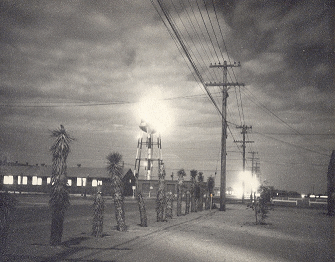
On October 6, 1957, Tucson, Arizona, an engineer spotted a “Parent Object (oval-shaped) 5 smaller objects emerged, flew away.”
Muroc AFB, 1945.
From the very beginning of the UFO phenomenon (late June/early July) 1947, such ovals were associated with the Southwest deserts of the United States and the Pacific coastal areas. The July 8, 1947, sightings at Muroc AFB (now Edwards AFB), are some of the earliest there are. The morning sightings are particularly relevant: “Two spherical or disc-like UFOs joined by a third object. Crew of technicians saw white-aluminum UFO with distinct oval outline descending, moving against wind.”
Although Stansel’s account was at odds with the folklore of the 1970s, it fits perfectly within the era he said it happened (May 1953). In substance, nothing has changed. To this very day, these exact same type of oval saucers continue to group in flocks in the Pacific off California.
In 2004 the US fleet was vexed by them only about 100 miles offshore of San Diego / Baja California. Several F-18 Super Hornets were launched from the USS Nimitz and closed-in on the location of the mass targets. There was a fleet of them in one location, and gun cameras captured them. The pilots can be overheard speaking on the film.
“It’s a fuckin’ drone, bro.”
“There’s a whole fleet of them. Look on the S.A.”
“My Gosh!”
“They’re all going against the wind. The wind is 120 knots to the west. Look at that thing, dude. That’s not an LNS though, is it?”
“That is an [unclear] dude.”
“Well, if there’s—”
“Look at that thing!”
“It’s rotating!”
Another pilot, David Fravor, saw one hovering over the ocean, waffling or rocking back and forth. It was basically bouncing about erratically. When he circled downward and got close, the UFO shot off and vanished in a couple of seconds.
Once again, we see low inertia is a common thread. At high speed it was very stable, but just hovering over the ocean it wasn’t stable. Not only does this link it with the earliest sightings of saucers over the continental USA, he described it as about 40 feet long, oval shape like a giant tic tac (white-silver). Fravor’s assessment of size and shape is echoed by radar.
Long before the fleet pilots saw these 40 feet oval UFOs in the Pacific in 2004, powerful missile tracking radar had painted them during missile launches out of Vandenberg AFB near Santa Barbara. One such record is from August 1973. On June 17, 1974, the Hobart Mercury (and NY Times) reports dateline Huntsville, Alabama. Source: Major Dallas Van Hoose.
Last August, the Air Force launched a Minuteman ICBM from Vandenberg Air Force base aimed for the Kwalaicin [Kwajalein?] missile range which is used by the Army, Air Force, and Navy. The radar experts in the Pacific found they were also tracking an unidentified flying object next to the ICBM’s nose cone.
Radar picked up an inverted saucer-shape object to the right and above the descending nose cone and watched it cross the warhead’s trajectory to a point which was below and to the left of it before the phantom ship disappeared.
The ‘ghost ship’ was described as being 10-feet high and 40-feet long.
Two separate radar systems saw it at the same time which may eliminate the probability that there was a malfunction in one of the radar systems. It was also reported that 3 other identical objects were seen in the vicinity— the same size, shape, and dimensions. One scientist said the data indicated that the phantom ship flew under its own power “but could not explain what sort of power” was involved.
Alas . . .an old . . .and continuing story; one that has been centered in the Pacific since 1947, at least as far as California, Arizona, and New Mexico sightings are concerned.
Altogether these accounts are very suggestive of the one account of a saucer crash and retrieval. It was oval, and as the engineer who measured it in situ could recall it looked like brushed aluminum and was about 30 feet in diameter. He did not mention its thickness, but 10 feet as reported in the radar observation above would seem average for the dimensions he lists. It conforms to the many sightings of these craft as discs or saucers. It had only impacted 20 inches into the Arizona desert, indicating once again it was lightweight.
Early patterns also suggested the saucers came into our atmosphere over the oceans, the theory being the saucers wanted to avoid our radar. Another theory was that they set up housekeeping in our oceans after their arrival here from outer space. The spate of 1952 sightings off Virginia and North Carolina and New York suggested an ocean base. Another prime location for sightings was off Labrador in Canada. Ken Arnold first saw the fleet of saucers in Washington State, and it can be argued that they had been coming in from the Pacific. The early sightings in California and Arizona also suggest the saucers’ trajectory was from the Pacific, quite close to where the fleet would encounter them in 2004.
Low inertia and saucers of 30-40 foot diameter ovals are a repeating theme. On their own such reports can inspire and sustain the early theory that the saucers were lightweight and their inhabitants also have low inertia like insects. But only once does a description of a crashed saucer match the actual reports. Its location matches the flap of reports of such silver ovals in the same area. The location matches flight patterns consistent with fleets of saucers based in the Pacific. Stansel’s time frame fits the period in which the Air Force’s attitude suddenly changed and it started its lock down on saucer reports to the public.
On the other end of the spectrum of field recovery (Stansel) is the memory of a prestigious scientist. Around this same time, Dr. Sarbacher remembers the R&D guys talking about a crash and insectoid occupants. Stansel observed a single body in the field. It was dark brown and small. If Dr. Sarbacher’s memory was correct, it was designed more like an insect’s and all the R&D discussions weren’t the product of theorizing.
Soon hereafter it got out and about that the USA had such saucer programs. Arch UFOlogist, Major Donald Keyhoe, found these claims disturbing. He was the most vocal and sober voice that proposed the interplanetary spaceship theory to explain UFO reports. Saucer buffs and their newsletters (often quite influential) would give little play to the skunk-works-type programs. Keyhoe warned Coral Lorenzen, the publisher of A.P.R.O.’s influential Bulletin, that the idea our science was even near capable of building a working flying saucer was intentional disinformation by the Air Force to discredit flying saucer reports and the outer space theory. Under his direction, NICAP would repeatedly minimize black projects as responsible for UFO sightings. Believers in interplanetary visitors eagerly embraced his arguments.
But it is a fact that within a few years of 1953, UFO sightings changed. They shifted more to nighttime and they happened with stark clarity and were seen by dozens and even hundreds of people. A very vivid case in point comes from NICAP’s own files. On February 13, 1957, over Burbank, California— “Several oval UFOs observed maneuvering over city at various times on night of February 13/14. Police officer [Robert Wells] said UFOs would dart across sky, hover briefly, then speed away. Woman reported oval object emitting light beams; ‘then it went straight up and disappeared.’”
This would become the typical UFO report— nocturnal lights doing remarkable maneuvers and seen by hundreds of reliable people. These were astounding performances, but this was also going on over Lockheed’s skunk works. Then something else happened that year: multiple landings of a spectacular glowing object. The vital clue came in November 1957 at Levelland, Texas. And we have to consider how and why. The events at Levelland are crucial in our advance to the present.
|